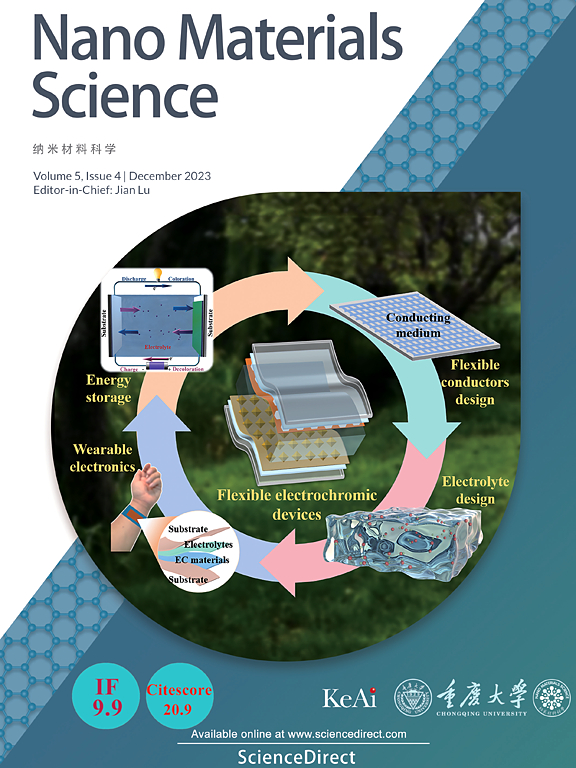受表皮启发自组装的离子电子泡沫,灵敏度高、范围广
IF 17.9
2区 材料科学
Q1 Engineering
引用次数: 0
摘要
电子皮肤展示了受人类皮肤启发的优越传感能力。然而,大多数先前的研究集中在皮肤的真皮层而不是表皮。特别是,表皮的伪多孔结构域增加了皮肤的耐受性,同时确保了其对触摸的敏感性。然而,大多数关于多孔结构的研究在灵敏度和/或检测范围方面未能复制类似皮肤的优越传感性能。受皮肤表皮吸收能量的同时向神经产生离子传导这一策略的启发,本工作首创了一种基于离子凝胶泡沫的易于生产且成本低廉的压力传感器,并在宽压力范围(高达1 MPa)内实现了高灵敏度(2893 kPa−1),是迄今为止最好的案例之一。在丰富传感原理的同时,探讨了影响传感器性能的因素。令人鼓舞的是,利用制备的传感器进行足底压力测量,揭示了超宽的检测范围(100 Pa-1 MPa),从而在机器人和健康监测领域提供了巨大的应用潜力。本文章由计算机程序翻译,如有差异,请以英文原文为准。
Epidermis inspired self-assembled iontronic foam with high sensitivity and broad range
Electronic skin has showcased superior sensing capabilities inspired from human skin. However, most preceding studies focused on the dermis of the skin rather than the epidermis. In particular, the pseudo-porous structural domain of the epidermis increases the skin's tolerance while ensuring its susceptibility to touch. Yet, most endeavors on the porous structures failed to replicate the superior sensing performance of skin-like counterparts in terms of sensitivity and/or detection range. Stimulated by the strategy that the epidermis of the skin absorbs energy while producing ionic conduction to the nerves, this work initiatively introduced an easy-to-produce, and low-cost pressure sensor based on ionic-gel foam, and achieved a high sensitivity (2893 kPa−1) within a wide pressure range (up to ∼1 MPa), which ranked among the best cases thus far. Moreover, the factors affecting the sensor performance were explored while the sensing principles were enriched. Inspiringly, the plantar pressure measurement by harnessing the as-prepared sensor unveiled an ultra-broad detection range (100 Pa-1 MPa), thus delivering a huge application potential in the field of robot and health monitoring.
求助全文
通过发布文献求助,成功后即可免费获取论文全文。
去求助
来源期刊

Nano Materials Science
Engineering-Mechanics of Materials
CiteScore
20.90
自引率
3.00%
发文量
294
审稿时长
9 weeks
期刊介绍:
Nano Materials Science (NMS) is an international and interdisciplinary, open access, scholarly journal. NMS publishes peer-reviewed original articles and reviews on nanoscale material science and nanometer devices, with topics encompassing preparation and processing; high-throughput characterization; material performance evaluation and application of material characteristics such as the microstructure and properties of one-dimensional, two-dimensional, and three-dimensional nanostructured and nanofunctional materials; design, preparation, and processing techniques; and performance evaluation technology and nanometer device applications.
 求助内容:
求助内容: 应助结果提醒方式:
应助结果提醒方式:


